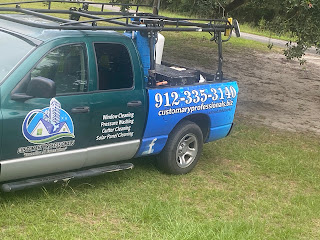How to Keep Your Student Loan Payment at $0
How to Keep Your Student Loan Payment at $0
Ryan Lane
February 8, 2021, 12:01 pm
President Biden announced on Jan. 20 that most federal student loan payments would be suspended interest-free through September 2021 due to the ongoing pandemic.
Once the suspension lifts, though, a $0 payment still may be a necessity for some borrowers.
According to an October 2020 survey from NerdWallet conducted by The Harris Poll, 45% of Americans with federal student loans of their own weren’t confident they’d be able to afford their loan payments when the payment freeze was scheduled to end last December.
Enroll in income-driven repayment
For a manageable payment, start with an income-driven repayment plan.
Unauthorized access.
“Look at income-driven repayment first because it offers the most benefits,” says Persis Yu, director of the nonprofit National Consumer Law Center’s Student Loan Borrower Assistance Project.
Those benefits can include forgiveness after 20 or 25 years of payments, partial interest subsidies and monthly bills as low as $0.
Payments are based on adjusted gross income, family size and federal poverty guidelines. For example, if you had an AGI of $19,000, were single and lived in the lower 48 states, you’d pay $0 for 12 months under most income-driven plans.
If you already use one of these plans and your income has decreased, your payments can too.
“It’s important for borrowers to realize that they can ask to have their plans recertified at any time,” Yu says.
You can estimate payments under different income-driven plans with the Department of Education’s Loan Simulator.
Defer student loan payments
Federal student loan payments can be paused via deferment and forbearance.
Deferment is tied to events like losing your job or undergoing cancer treatment. If you’re eligible, this option can keep payments at $0.
For example, an unemployment deferment may be possible if you work fewer than 30 hours per week. If your hours were cut, but your household’s earnings are too high for an income-driven plan, deferment may make sense.
The government also covers all the accruing interest on subsidized loans during deferment.
“There are some subsidies on income-driven plans, but they’re more generous with deferment,” says Betsy Mayotte, president and founder of The Institute of Student Loan Advisors, a nonprofit that offers borrowers free advice.
Deferment is often available for up to three years, but you have to reapply periodically. For an unemployment deferment, the duration is every six months.
Place loans in forbearance
Payments are currently suspended interest-free via a special administrative forbearance. When that break ends, your servicer can grant you a discretionary forbearance, potentially without paperwork.
But besides no bills, that type of forbearance offers few benefits.
“Forbearance is a last resort,” Mayotte says. “It’s either that or you’re going to go delinquent or default.”
Interest usually accrues during forbearance. When it ends, that interest can be added to the amount you owe, meaning future interest grows on a bigger balance.
With any $0 payment strategy, it’s possible you’ll repay more overall.
“If you can afford it, I would always recommend paying versus not paying,” Mayotte says.
Getting ready
The most important thing to do now is understand your options, says Scott Buchanan, executive director of the Student Loan Servicing Alliance, a nonprofit that represents student loan servicers.
In part, that’s because servicers can’t change your payments yet.
“It’s a matter of regulation and process,” Buchanan says. “We can’t actually put you into (a) plan right now because you’re not in repayment.”
But you can do the following:
- Check your info. Log on to your servicer’s website to check your contact information and payment amount. If you’re not sure who your servicer is, visit the Federal Student Aid website. Mayotte says to beware of companies reaching out and offering help for a fee; your servicer will never charge you.
- Gather paperwork. Applications can require documentation like pay stubs, which Buchanan says must be from the past three or four months when you submit your forms. If you applied now, you’d likely have to do so again with more current information. But you can get a head start by figuring out what you’ll need and filling out what you can.
- Set a reminder. With payments set to resume in October, plan to submit your requests over the summer.
“If you wait until the day before your due date in the month when 30 million people are going into repayment,” Buchanan says, “call times are going to be long.”
This article was written by NerdWallet and was originally published by The Associated Press.
Post provided by : Customary Professionals. 912-335-3140
(customaryprofessionals.biz)



I purchased herpes herbal medicine and received it within 7 days and used it as prescribed, I tested negative within 3 weeks use, do not loose hope to contact him early If you need help meet him on his email address dr,chalaherbalhome@gmail.com Or on his website https://
ReplyDeletedrchalaherbalhome.godaddysites.com or https://mywa.link/dr.chalaherbalhome ❤️❤️❤️����������